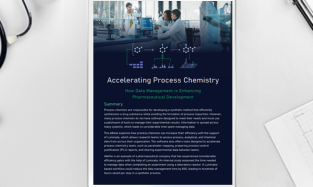Driving QbD as a quality standard in drug development
Posted: 2 January 2024 | Catherine Eckford (European Pharmaceutical Review) | No comments yet
To facilitate Quality by Design (QbD) in becoming a true standard approach for drug development, pharma should attend regulatory expectations and pursue innovative frameworks that guarantee high-quality levels, researchers urge.


A paper published in the European Journal of Pharmaceutics and Biopharmaceutics has reviewed the current application status of Quality by Design (QbD) within the framework of the ICH guidelines (ICH Q8(R2) – Q14 and ICH Q2(R2)). Over the past several years, the pharmaceutical industry has faced challenges regarding quality assurance in drug development, the author asserted.
Utilising a high-quality approach in the development of pharmaceuticals
Yet Quality by Design offers an innovative, systematic, scientific and risk-based approach to pharmaceutical quality.
This methodology enables better time and financial cost savings by streamlining the pharmaceutical R&D process and providing greater flexibility in manufacturing. It also lowers the regulatory burden too, the paper reported.
[In drug development, Quality by Design facilitates] establishment of an appropriate control strategy and the reduction of regulatory oversights”
The authors stated that critically, drug development using Quality by Design means a “thorough understanding” of a drug’s formulation and its manufacturing process can be achieved, as well as “establishment of an appropriate control strategy and the reduction of regulatory oversights.”
While advantages to the Quality by Design approach is clear and practical implementation of Quality by Design is encouraged by publication of public guidance documents ICH Q8(R2) – ICH Q14, the industry has not yet fully embraced the QbD approach in Marketing Authorisation Applications (MAAs) for European market approval, the authors noted.
For example, Simões et al. highlighted that “in the EU market, a relatively low number of approved pharmaceutical products adopted the QbD methodology or describe QbD elements in their regulatory submissions.”
Reviewing implementation of QbD in the pharmaceutical industry
To compile the review of Quality by Design in the context of MAAs in Europe, the researchers analysed the implementation of the QbD methodology for all MAAs approved by the European Medicines Agency (EMA) since the ICH Q8(R2) guideline was adopted in 2009. The team examined the European Public Assessment Report (EPAR) for the QbD approach.
The authors ranked the MAAs for 1780 pharmaceutical products approved between 2009 and 2023 according to different application types: full application (Article 8(3)), well-established use (Article 10a), fixed dose combinations (Article 10b), informed consent (Article 10c), generic (Article 10(1)), hybrid (Article 10(3)), and biosimilar (Article 10(4)).
“To continue bridging the gaps between traditional and modern (enhanced) development approaches, the industry should attend regulatory expectations and pursue innovative frameworks that guarantee high-quality levels,” Simões et al. concluded.
International regulation: the importance of quality assurance in drug development
Related topics
Big Pharma, Biopharmaceuticals, Clinical Development, Data Analysis, Drug Development, Drug Manufacturing, ICH guidelines, Manufacturing, QA/QC, Quality by Design (QbD), Regulation & Legislation, Research & Development (R&D), Technology, Therapeutics
Related organisations
European Medicines Agency (EMA), International Council for Harmonisation (ICH)









